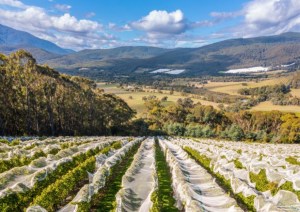From remote connectivity and smart operating systems, to fully realised virtual production lines, smart technology is making waves across the food manufacturing and packaging industry. CEO of tna Solutions, Alf Taylor, tells us how.
Much attention has been paid to the more technically complex aspects of Industry 4.0, but the true potential of these systems lies in their capacity to optimise existing production lifecycles. Let’s explore three ways advanced digital technologies are helping manufacturers to streamline food packaging processes from equipment commissioning to training and servicing – making production lines safer, smoother and more profitable.
Quicker commissioning
Ask most operations or production site managers which processes cause them the biggest headaches, and they will probably cite equipment commissioning, set-up and training. These vital but often complex and time-consuming activities became even more challenging during the pandemic when in-person commissioning and training visits were virtually impossible. To help keep business flowing, leading equipment manufacturers harnessed the power of augmented reality (AR), paired with remote equipment connectivity, to make tailored commissioning and training possible, anywhere in the world.
At tna, for example, even before the pandemic we were exploring ways to harness AR technology to streamline commissioning and training. This led to the recent launch of the tna remote assist tool, which allows producers to contact a technician and share an in-depth picture of their facility through the Microsoft HoloLens 2 headset. Using AR technology, the technician can guide the user through the commissioning and installation process with precisely tailored instructions, without waiting for a site visit. The AR headsets are also an invaluable asset when it comes to training, allowing operators to practice their processes on true-to-life virtual machines. This technique has been shown to deliver an 80 per cent retention rate 12 months after the initial training programme, minimising both the risk of trainees damaging specialised equipment and the need for costly refresher courses.
Optimising efficiencies
Virtual reality (VR), like its sister technology AR, has a lot to offer food producers in terms of increasing efficiency, reducing downtime and upping production speeds. Enabling the creation of a fully digital production line, customisable VR platforms give producers complete insight into their processes in one place. With this comprehensive overview, operators can trial various setting changes on the virtual production line before making permanent changes to real equipment.
Equipment enhanced by the Internet of Things (IoT), self-learning software and artificial intelligence (AI) can also help brands achieve the coveted balance between throughput speed and product quality. With seamless integration between various line components and smart pre-set modes, manufacturers can calibrate the entire production line to perfectly produce almost any product type at the touch of a button – with minimal downtime.
Smarter servicing
Regular maintenance and servicing are key to extending the life of food packaging lines, but this can be time-consuming and expensive. Remote connectivity and AR platforms, however, are making troubleshooting and servicing easier to manage, regardless of geographical boundaries. With remote access, technicians from the original equipment manufacturer (OEM) can access log files and take control of the system virtually to diagnose difficult-to-trace faults. This real-time data sharing removes the need for in-person site visits for inspections or equipment servicing, helping save valuable resources and get systems back up and running quickly.
As well as enabling faster equipment commissioning, AR tools, like tna remote assist, give manufacturers access to frequent, real-time expert evaluations. This means more accurate machine repairs, as well as regular check-ins with equipment experts, allowing managers to plan ahead and mitigate the impact of an unexpected malfunction.
Making INDUSTRY 4.0 a reality
Following years of excitement and predictions, the digital revolution is finally starting to make a tangible impact on the daily operations of food producers. As more brands realise the benefits of AR, VR and other smart technologies, the challenge for equipment manufacturers is to identify the next big innovation and make it real for their customers.
This article was first published in the January-February 2022 print issue of PKN Packaging News, p44.






